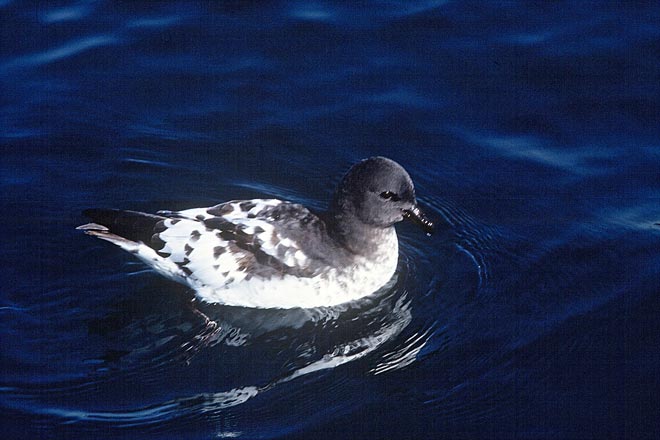
Cape petrels are part of the fulmarine petrel group, which also includes giant petrels. They have sturdy bills with prominent nasal tubes. Cape petrels often feed by sitting on the water, using their feet to stir up planktonic crustaceans, which they peck from the surface. Their distinctive markings have given rise to the name pintado, which is Portuguese for ‘painted’. They fly and feed in flocks and often follow vessels such as the Wellington–Picton ferries.
Te whakamahi i tēnei tūemi
Department of Conservation
Reference:
10031095
Photograph by Rod Morris
This item has been provided for private study purposes (such as school projects, family and local history research) and any published reproduction (print or electronic) may infringe copyright law. It is the responsibility of the user of any material to obtain clearance from the copyright holder.









Tāpiritia te tākupu hou